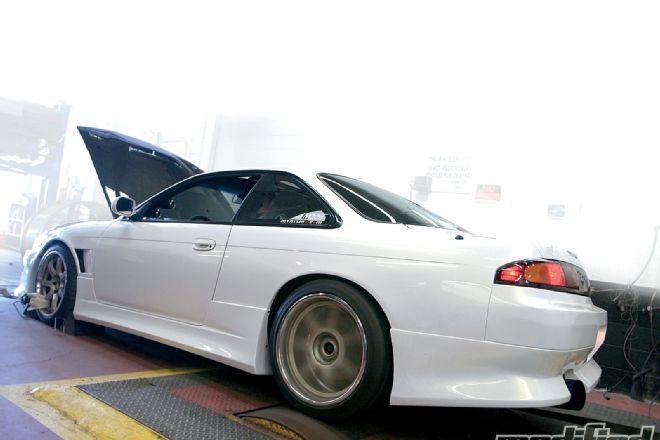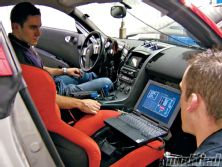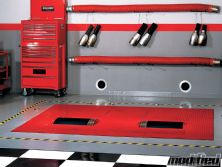Having spent countless hours watching the rollers spin while other enthusiasts put their pride and joys to the test, I firmly believe there has to be more to this scenario than a cold printout and a hot clutch.
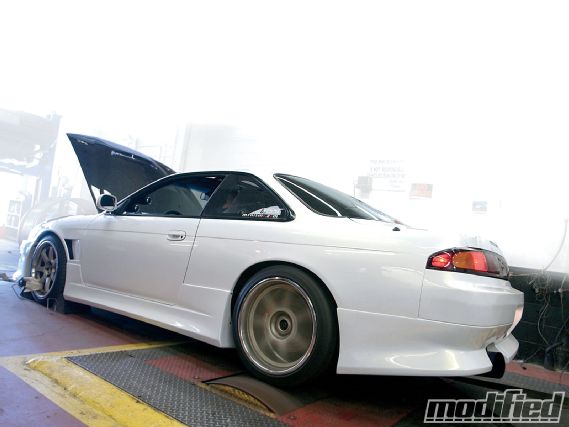 |
Tales From the Dyno Cell: Part 2
|
Tales From the Dyno Cell: Part 2
What transgression or series of unfortunate events trigger the pilgrimage to the dyno cell for these enthusiasts? What do the squiggly lines and numbers mean? The hard facts of a dyno chart certainly tell a tale, but much can be gleaned by delving into the backstory lurking beyond the rollers. Not only investigating the cause and effect of adding components but also what happens when things don't go off according to plan. The following charts are from real shops, the events depicted are true and no names were changed to protect the innocent.
The Case Of The Bogus Boost Controller
At Drift-Office, a performance tuning shop in Kent, Washington, a client had an FP Green turbo installed on his EJ20. Other supporting mods were STI "Pink" injectors and a Walbro 255 fuel pump. The customer had a mechanical eBay boost controller, and for the life of him couldn't figure out why his car was only making a hair more than stock, even with the thing cranked to 22.5 psi.
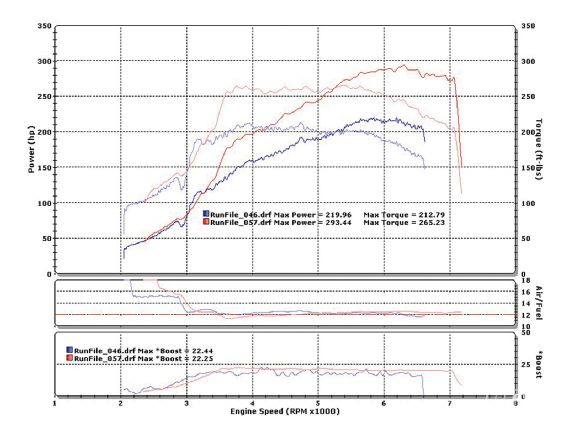 |
1 A properly set up electronic boost controller can be far more effective than a cheap eBay-special manual one.
|
1 A properly set up electronic boost controller can be far more effective than a cheap eBay-special manual one.
Drift-Office's Bob W. tried to explain to him that his boost controller, though it qualified as "functioning," was really unable to control boost in any way, shape or form. After all, not all boost controllers are built alike and a "great price on eBay" raised flags, not expectations. So Drift-Office told him he would be better off with a brand-name electronic boost controller (EBC) of some sort, and a GReddy PRofec B was suggested.
Bob W. says the boost controller was called into question because of the ragged boost plot line that the dyno was picking up [1]. All things considered, it doesn't look too bad on the graph, but if a boost line isn't smooth and flat, something is amiss and you're not going to make optimal power.
"In his frustration, the customer went so far as to say that we were inadequate tuners and that's when we defended ourselves decisively," Bob W. says. "Armed with a Blitz SBC Spec S, our lead tech Billy Lee busted out the tools, installed it and we proceeded to set the boost to the same level: 22.5 psi. Needless to say, without touching the tune whatsoever the car catapulted to a whopping 293 awhp and 265 ft-lbs of torque! The customer was rather elated thereafter, and I told him he could come back and pay us for the EBC, and since it was already in there, I wasn't going to charge him for the labor. He comes back a week later, handing us our SBC back and said he bought his own controller-a PRofec B."
The Case Of The Overmatched Ignition
As Aaron O'Neal of Vancouver, Washington's, English Racing was flash tuning his EVO to its impressive 574 awhp (see "Tales From the Dyno Cell: Part 1," Jan. '10) there was a bump in the road. "Driving the car, this felt like a slight hiccup and some bucking," O'Neal says, "but on the dyno sheet it lost 100 whp during the misfire event [2]. The 3586 (turbo) hit harder and at a higher rpm, the stock ignition couldn't keep up, resulting in a misfire near peak power. I changed to a SparkTech Non-CDI and have had no problems."
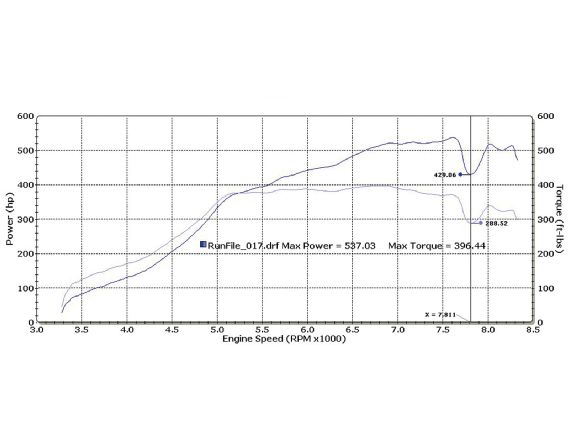 |
2 Note the massive dip in the chart-that's the result of an ignition misfire. If your dyno chart exhibits the same dip, then it's more than likely an ignition issue.
|
2 Note the massive dip in the chart-that's the result of an ignition misfire. If your dyno chart exhibits the same dip, then it's more than likely an ignition issue.
The Case Of The Overbearing Cam
Speed Factory is a go-to shop for Honda enthusiasts in the Tacoma, Washington, area. Owner James Kemph and his crew stay right on the leading edge of all things Honda because credibility is everything. This involves a lot of hands-on testing and when Speed Factory found itself testing a gaggle of cams for the D16Z6 SOHC VTEC powerplant Kemph took some notes for us.
In this instance, Speed Factory's Dynapack is illustrating why a race-grind cam is not well suited for the street. Too often the ego takes over and the bloodlust for a big number sacrifices all manner of street driveability. The cam in question is not at fault in any way-it actually comes through with flying colors. It's simply a race cam. The fault lies with any misguided enthusiast who puts such a beast in a street car.
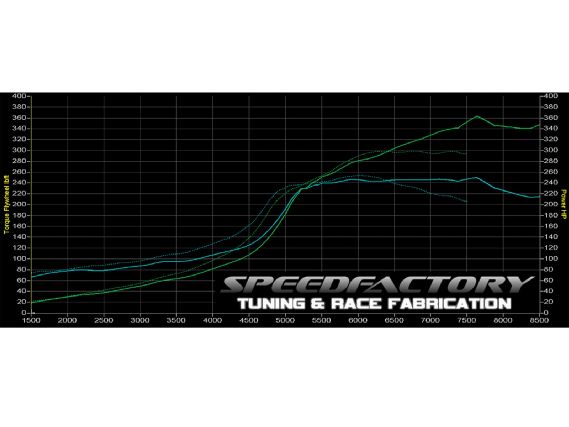 |
|
The engine in this scenario features a built bottom end, 750cc injectors, a 57-trim T3/TO4E turbo, 3-inch downpipe and exhaust, chipped P28 ECU tuned with Crome tune and a fortified valvetrain [3]. The cam in question is a ZEX 59500. It delivers the goods, pumping up output by a staggering 63 whp, taking peak power from 300 to 363. Kemph is quick to point out that it loses power until 6400. "It's behind down low mostly because the engine suffers a 350-rpm loss in spool time versus stock," Kemph says. "But when it hits, it's fireworks. This cam is good for a drag application, but I can't recommend it for a street-driven car. You'd barely ever rev high enough [on the street] to feel it kick in and you'd be giving up big performance in the D16's sweet spot."
The Case Of The Redline Crossed
Redline means danger, really. Here is what happens when drivers don't seem to understand the term "rev limit" [4]. The vehicle was a brand-new '09 WRX that barely had 1,500 miles on it when it rolled up to Drift-Office on one of the company's Subaru dyno days. The customer mentioned he was really getting on it on the way to the dyno. The problem was he didn't know when to get off it. He said the car felt a bit off. The first run was low on power and the second featured rod knock at its crescendo. Ouch. "From what we heard," Bob W. says, "it was covered under warranty because of some 'known defective bearings.'"
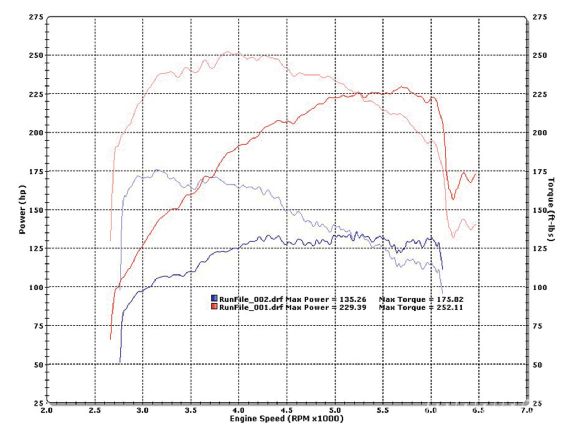 |
|
The Case Of The Heat Range Round-Up
Yep, the crew at Drift-Office sees it all. This time around, the guys changed the heat range of the spark plugs in a DSM that came in for an A'PEXi SAFC NEO boost tune. The chart shows back-to-back runs with the second pass being the 6 Series plugs (red) versus a 7 Series heat range plug. Peak power jumps from 209 to 221 whp and there are substantial gains evident from pretty much the moment Bob hits the sample button [5]. The gains from 5400 on up are expected because this is where cylinder pressure is on the rise, which would compromise ignition performance. We are a bit surprised to see gains as low as 3500 rpm. Also, always remember to diligently gap your plugs. Improper gapping can perpetuate ignition misses, and when you're talking turbos or forced induction gapping becomes doubly critical.
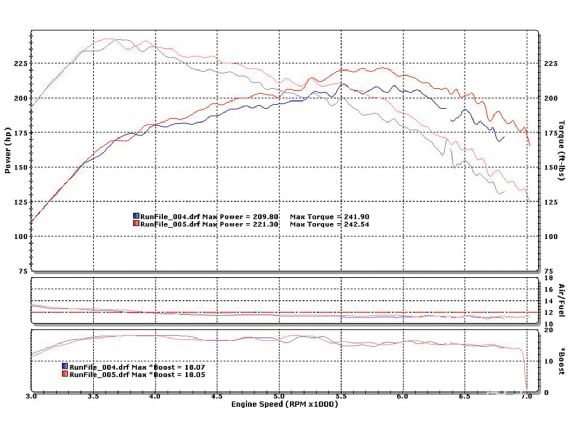 |
|

